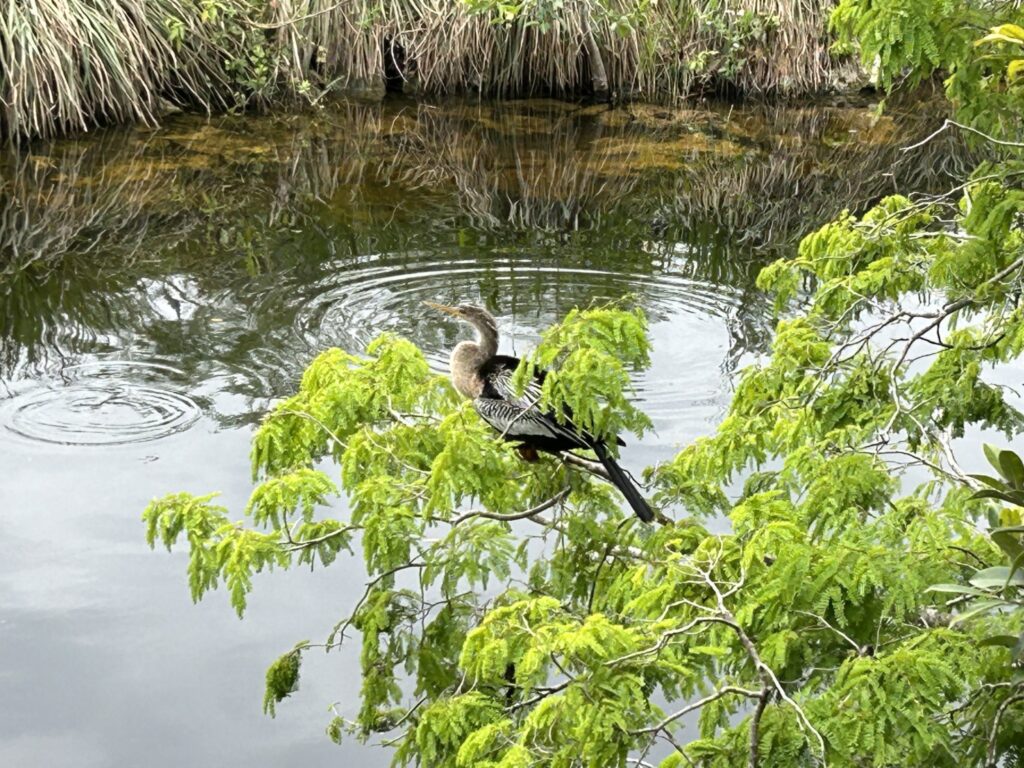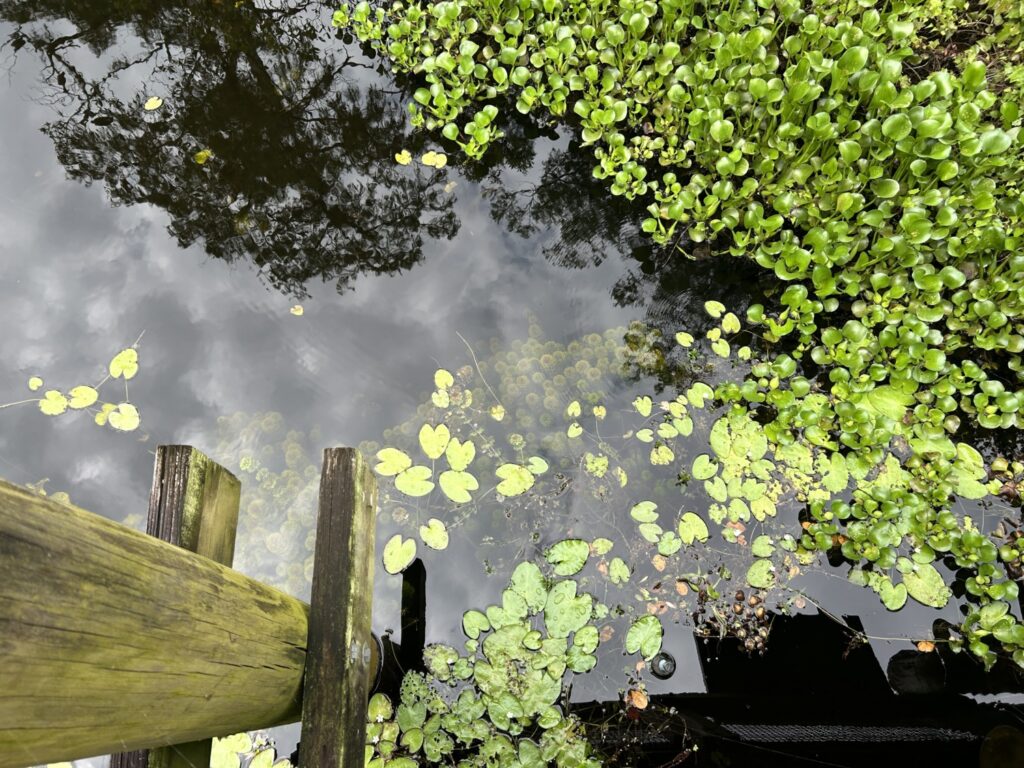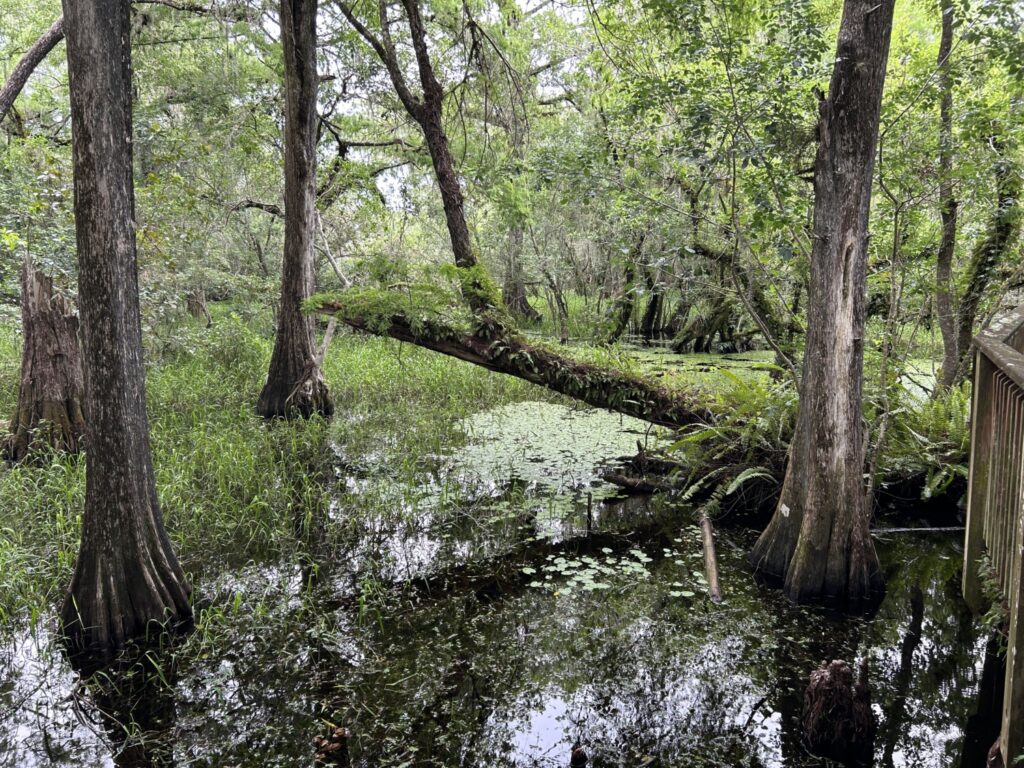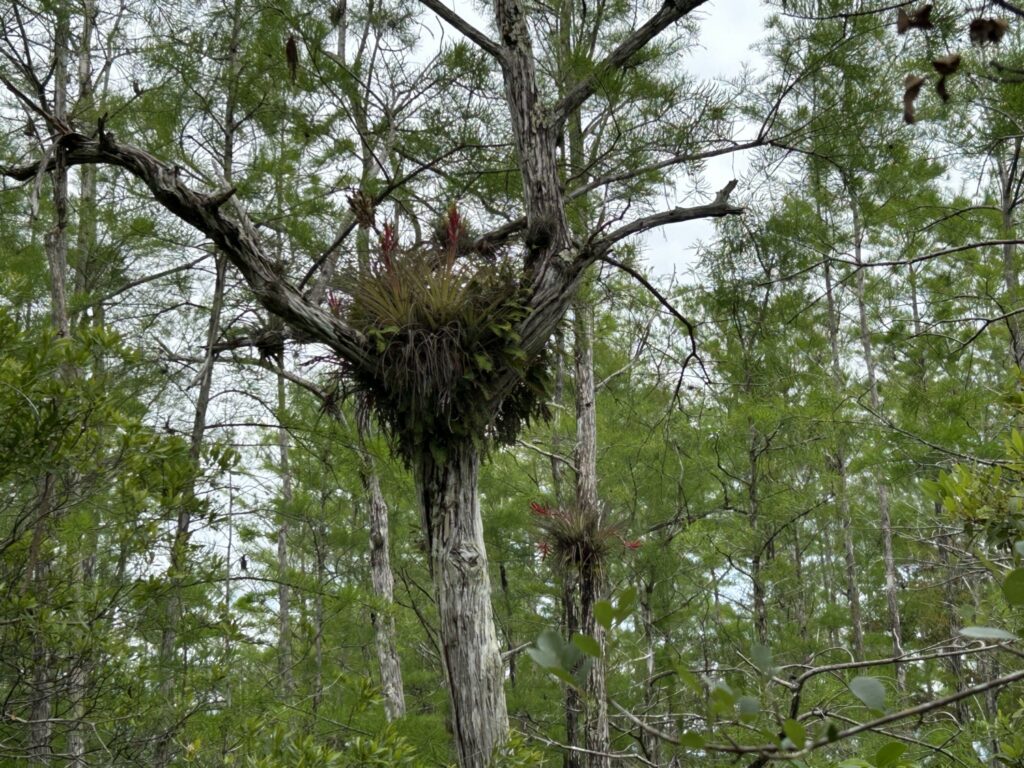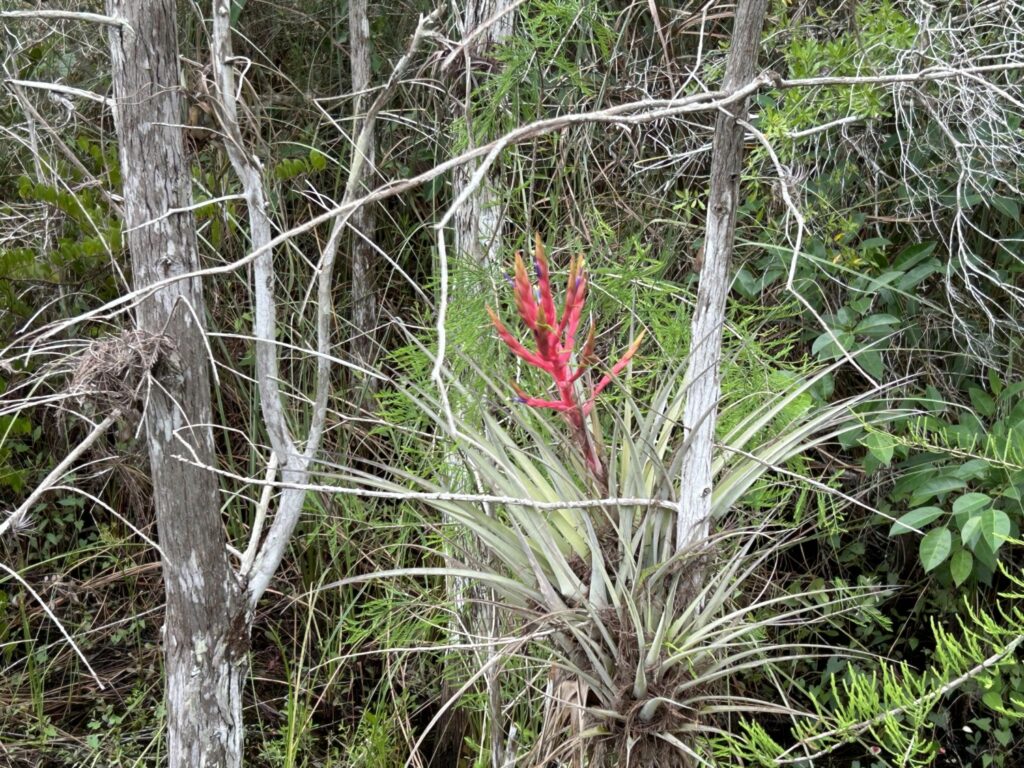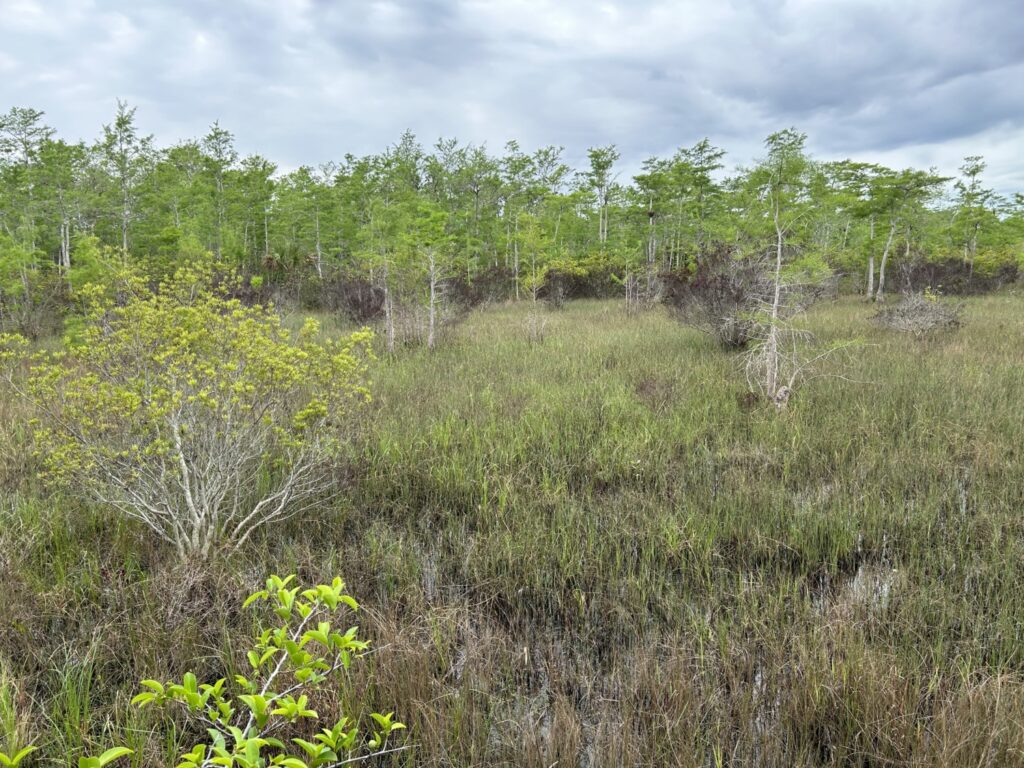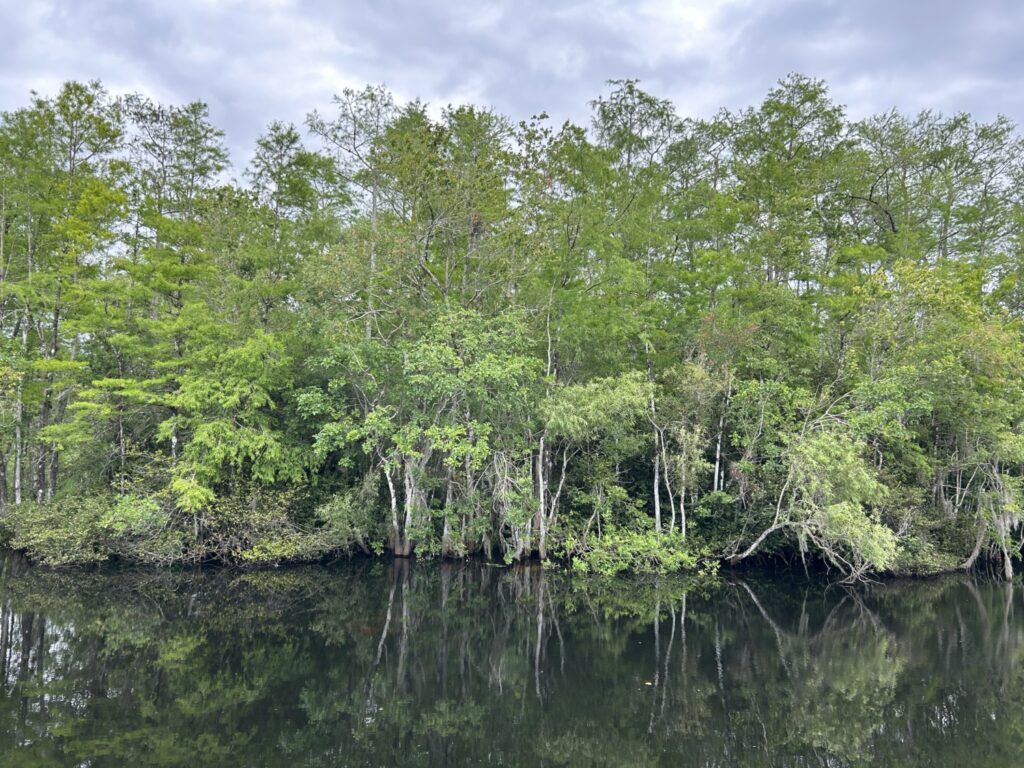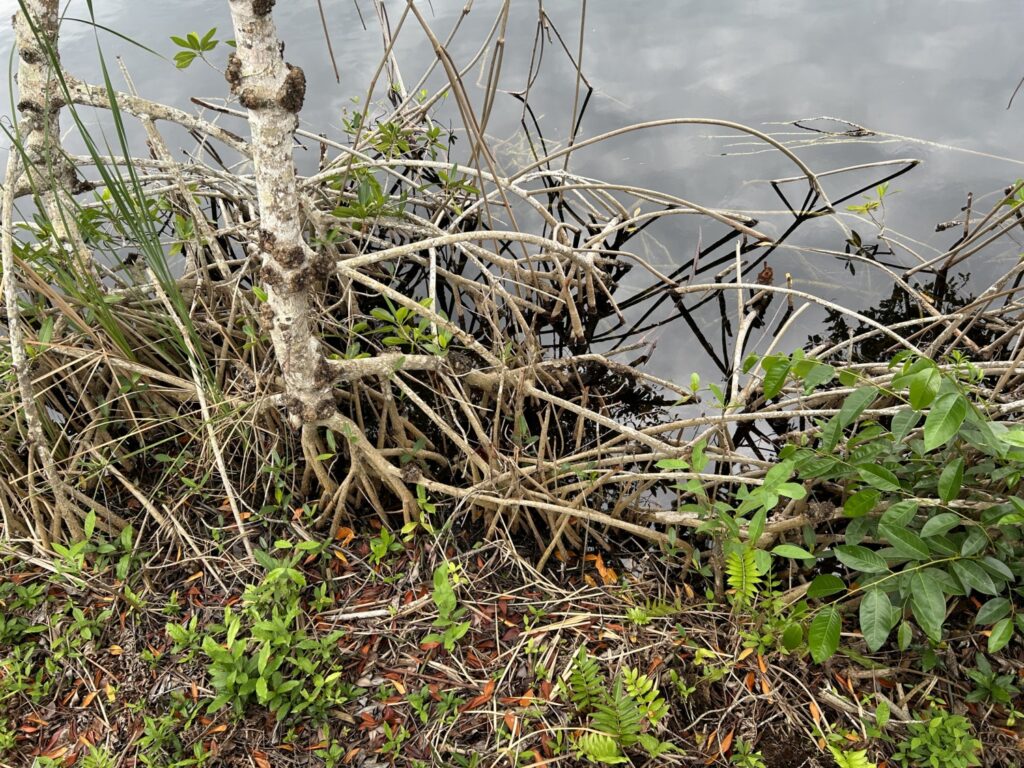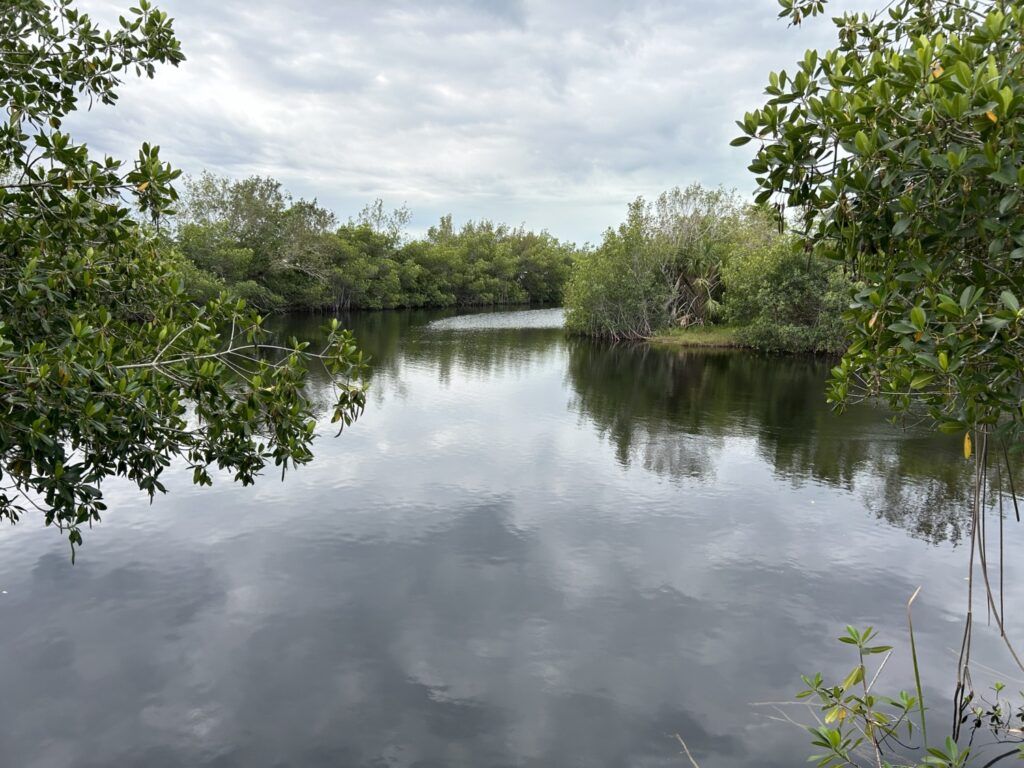The day after visiting De Soto National Memorial, Tom and I visited Big Cypress National Preserve. Big Cypress is administered by the National Park Service, so I needed the stamp. In addition, Tom and I had never been there, despite previously visiting Everglades National Park.
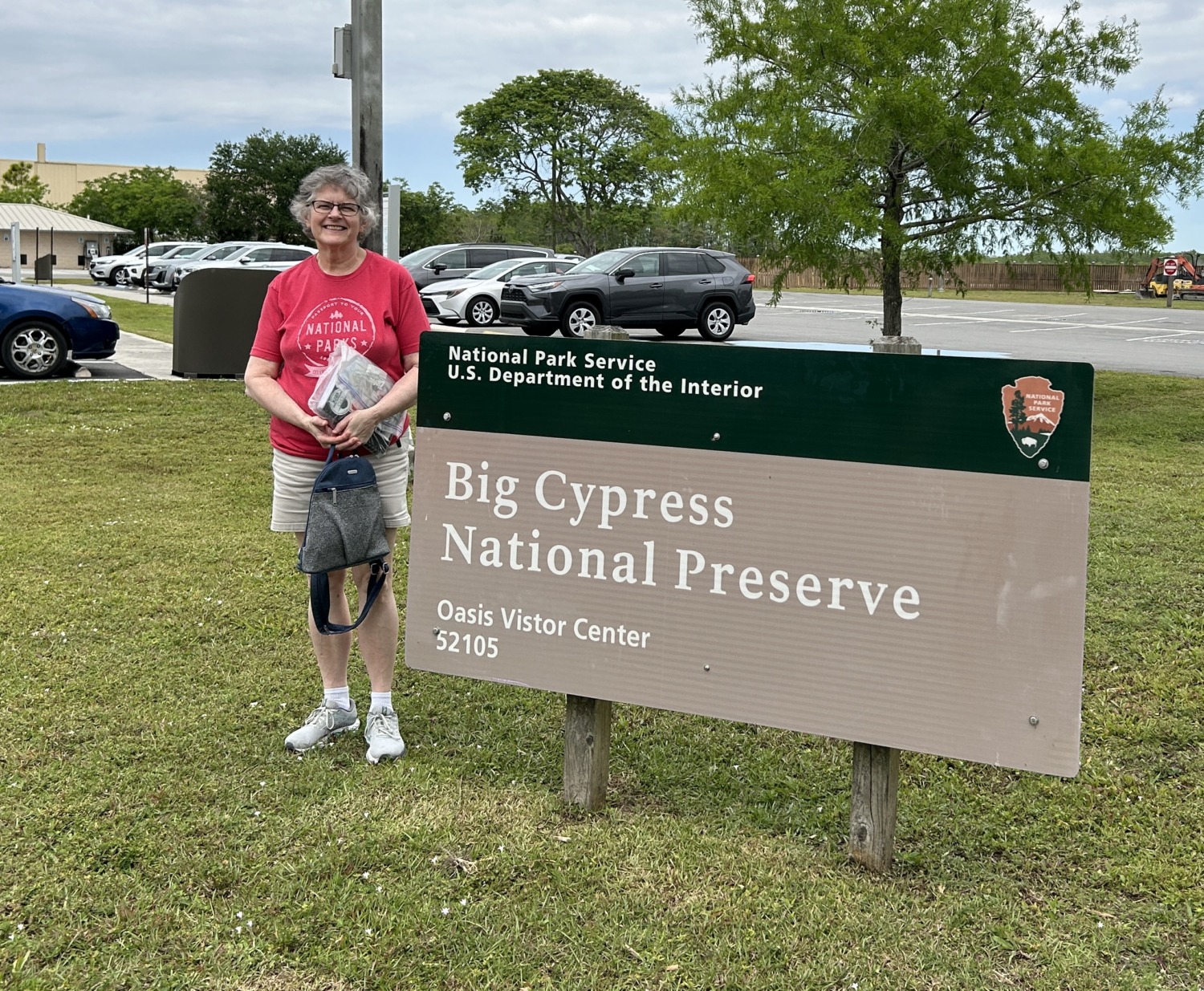
Big Cypress National Preserve is a diverse landscape of cypress and mangroves, alligators, and panther habitat. Just like the diversity of the land, the National Park Service manages for a diversity of activities within the national preserve that national parks typically do not allow. The preserve has 730,000 acres, more than the state of Rhode Island. Over a million people visit every year and many people still live within the preserve’s boundaries. The preserve is a freshwater swamp and has the largest contiguous habitat for Florida panthers.
In the 1960’s, plans for the world’s largest Jetport, to be constructed in the heart of the Greater Everglades of south Florida, were unveiled. This project, and the anticipated development that would follow, spurred the incentive to protect the wilds of the vast Big Cypress Swamp. To prevent development of the Jetport, local conservationists, sportsmen, environmentalists, Seminoles, Miccosukees, and many others set political and personal differences aside. The efforts of countless individuals and government officials prevailed when, on October 11, 1974, Big Cypress National Preserve was established as the nation’s first national preserve.
The concept of a national preserve was born from an exercise in compromise. Everyone saw the importance of protecting the swamp, but many did not want this region merely added to nearby Everglades National Park. Many felt that national parks were managed in a restrictive manner and access to the swamp would be lost. The resulting compromise created a new land management concept – a national preserve. An area that would be protected, but would also allow for specific activities that were described by Congress within the legislation that created the preserve.
A wide variety of traditional activities were carried out in Big Cypress before the preserve was established. Hunting, oil and gas extraction, operation of off-road vehicles, private land ownership, traditional use by Miccosukee and Seminole Tribes, and cattle grazing were allowed for by the US Congress through the preserve’s enabling legislation. These six traditional activities would not typically be allowed in a conventional national park.
Before becoming a national preserve, many individuals lived and recreated within the swamp. When the preserve was created in 1974, a person in legal possession of land, after meeting certain criteria, became exempt from federal acquisition. Hundreds of residences and primitive camps pepper the landscape of the preserve; several can only be reached by off-road vehicle or airboat.
Gaining access to private lands, locations for hunting or exploring the remoteness of the swamp can require specialized transportation in Big Cypress. Customized four-wheel drive vehicles called swamp buggies and airboats provide passage through the wilderness. Permits and vehicle inspections are required to explore the preserve’s network of off-road vehicle trails.
The Seminole and Miccosukee tribes still call Big Cypress and the Everglades home and continue to access resources as their ancestors did. They use timber for the construction of traditional shelters called “chickees,” and harvest plants and animals for personal use. As you drive through Big Cypress National Preserve, you see these traditional “Indian Villages” along the road.
To date, only two reserves of oil have been found on the landmass of Florida; one of these sits nestled under the Big Cypress, the Sunniland Formation. Oil was first discovered in the Sunniland area in 1943, and has continued to be extracted from beneath lands that are now part of the preserve. Oil fields in Big Cypress are located in the Raccoon Point and Bear Island areas. Private companies lease the mineral rights. The state and National Park Service monitor and oversee the extraction of oil.
Despite no active leases for grazing in Big Cypress today, the cattle industry still thrives in south Florida. At one time ranchers called “crackers” worked cattle on the land in Big Cypress. These ranchers used bullwhips and dogs instead of lassos, hence the name “cracker.”
Hunting continues at Big Cypress today. Commonly hunted species include whitetail deer, turkey, and feral hogs. Fishing and frogging are also allowed year round. All of these activities require the proper Florida license.
There are two Visitors Centers at Big Cypress National Preserve. Tom and I started at the Nathaniel Reed Visitors Center on the west side of the park. We talked to the ranger about what we could do during our time in the park. He suggested the scenic drive loop and the four boardwalk trails. The scenic drive loop is on a gravel road, so wasn’t going to happen with our rental car. The boardwalks, however, were all easy to reach from US 41 so we decided to do all four. We also watched the movie and I got my stamp.
Three of the four boardwalk trails were very short. We could see the entire boardwalk from the roadside parking lot. They were still fun to check out. One of the things we noticed was how clear the water was. The freshwater swamp acts as a water filter for the area and we could see all the way to the bottom. It was easy to spot fish, turtles, frogs, and alligators. One of the boardwalks was longer – half a mile – and was a more interesting walk. We did not, however, see any alligators along the walk. They were probably there but they are very good at disguising themselves.
The final boardwalk was at the Oasis Visitors Center, on the east side of the park. When we stopped there, I got the stamp for that Visitors Center and also got the stamp for the Florida National Scenic Trail, which ends there. The Oasis Visitors Center has an interesting display on the Seminole tradition of alligator wrestling.
Tom and I enjoyed our visit to Big Cypress National Preserve. Entrance to the preserve is free. We could have hiked or taken an airboat ride in the preserve, but we decided to move on instead.


